A faded scrapbook in the Office of History’s Research Collections tells the story of the Essayons Dramatic Club, which for many years was one of the oldest amateur theatrical production companies in the United States. The club was founded on 27 January 1864 by the Engineer Battalion, then serving with the Army of the Potomac and wintering at Brandy Station, Virginia. The battalion built a small theater and organized an orchestra, and on 26 February the troupe presented "Toodles," its first play. Unfortunately for the men of the battalion, in early April the theater was pressed into service as a guard house, and several weeks later the Engineers left camp to take part in the Battle of the Wilderness.
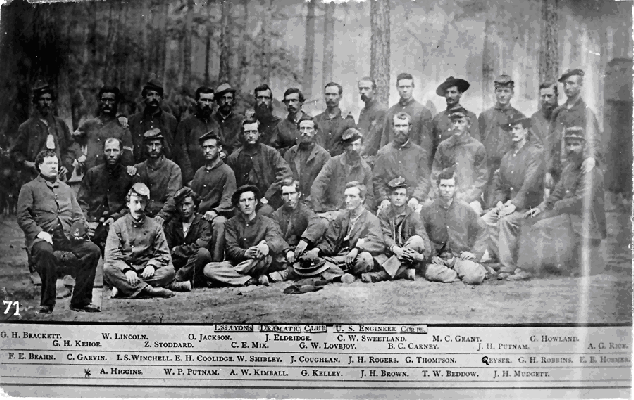
The earliest known photograph of the Essayons Dramatic Club, taken in the spring of 1864
at Brandy Station, Virginia. The club’s members were all enlisted men.
In the late 1860s the club was reconstituted at Willets Point, New York, then the site of the Engineer School. The Willets Point Dramatic Club flourished until the turn of the century when the Engineer School was moved to Washington Barracks, now Fort McNair in the District of Columbia. In 1919 the Engineer School moved again, this time to Camp Humphreys, Virginia, later renamed Fort Belvoir. Four years later members of the Engineer School revived the Essaysons Dramatic Club, and the troupe gave its first performance in 1923.
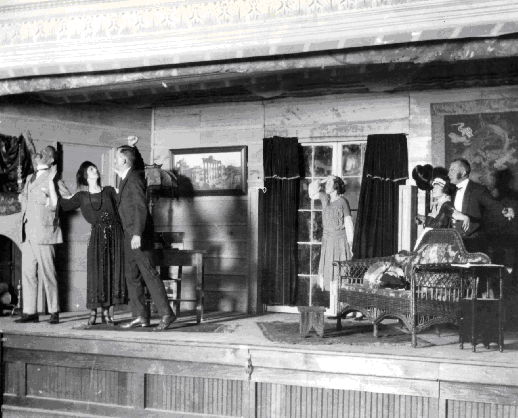
One of the club’s early productions was "Behind the Beyond" presented at the Red Cross Recreation Building in 1923. Cast members included Captain R.G. Moses, Lt. P.A. Feringa, Mrs. M.M. Boatner, Mrs. J.A. Woodruff, Mrs. A.G. Ashcroft, and Captain H.C. Lyons. The stage manager was Lt. Lucius Clay.
Except for a pause during World War II, the Essayons Dramatic Club continued staging amateur theatrical productions at Fort Belvoir for the next 45 years. During the 1920s and 1930s the club usually staged two or three productions a year. With music provided by the 13th Engineer Orchestra, the plays were a popular diversion on post. In 1938 tickets were 75 cents each, or a season ticket for three plays could be purchased for $1.50.
Most of the actors were officers from the Engineer School, and many had previous acting experience in college or community theater. Most of the actresses were officers’ wives, although a few were the daughters of senior officers. Club members built all of the sets.
News of the drama club’s activities was carried in the local newspapers including the Washington Post, the Washington Times-Herald, and the Washington Star. In 1939 Eleanor Roosevelt served as an honorary patron of the club’s presentation of "First Lady." Although the President and Mrs. Roosevelt were unable to attend the performance, the play received rave reviews and was attended by a number of Washington notables including members of the diplomatic corps.
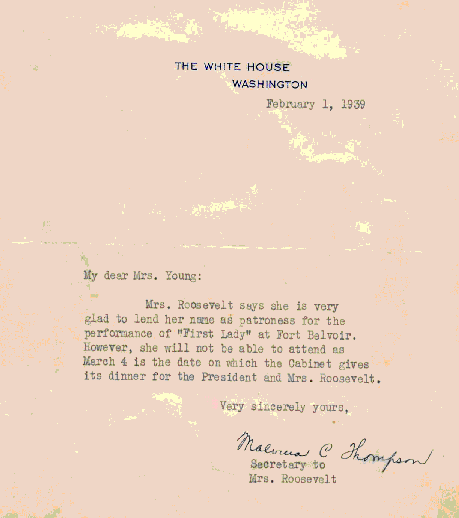
Although the First Lady agreed to lend her name to the play,
she and President Roosevelt were unable to attend the performance.
Following its performance of "Nothing But the Truth" in May 1941 the drama club suspended operations during World War II. The club resumed performing in March 1948 with the presentation of "Her Fatal Beauty" at nearby Woodlawn Hall. Over the years the Essayons Club performed at a variety of locations at Fort Belvoir, and also traveled to local military hospitals and other Army installations. The club continued to perform throughout the 1950s and 1960s.
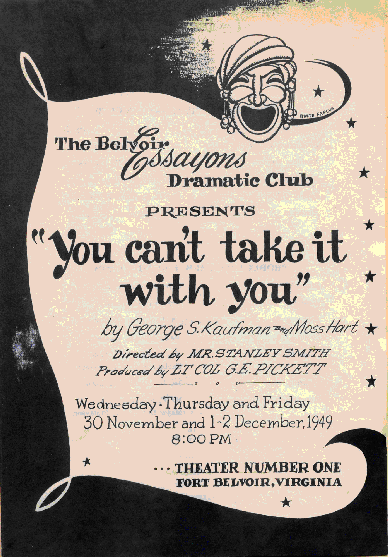
A stylized playbill from the late 1940s. Earlier programs were more formal,
with the Engineer castle prominently displayed on the cover.
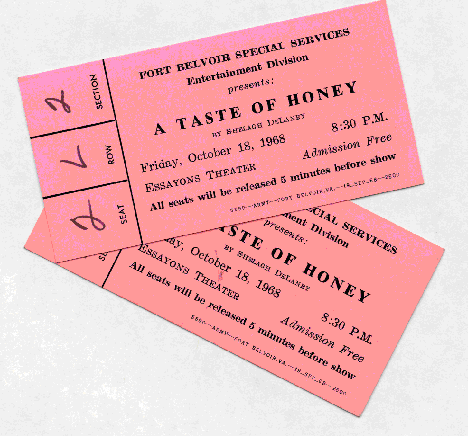
Tickets from a 1968 play. (Note admission was free.)
* * *
April 2001